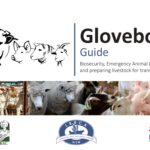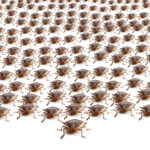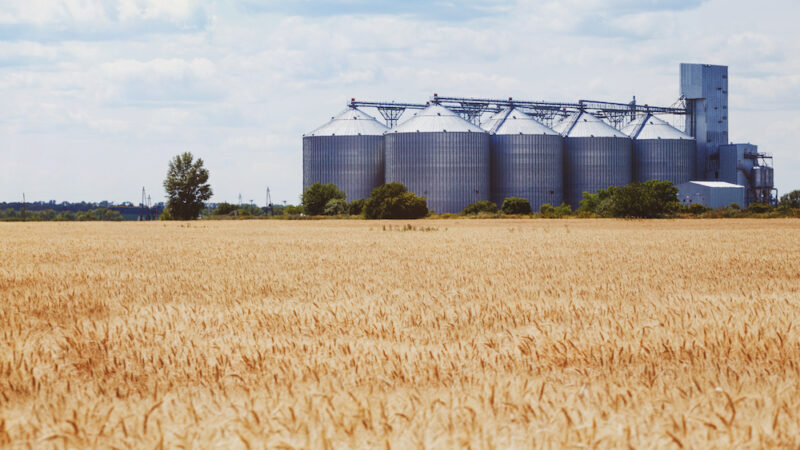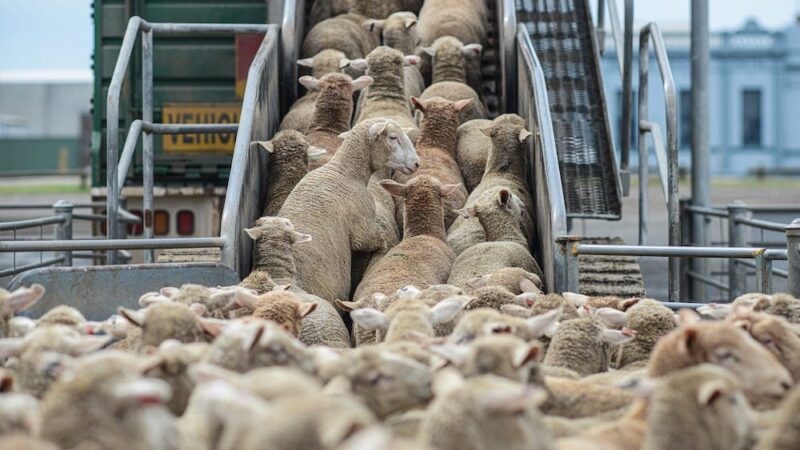The words 'biosecurity' and 'emergency animal diseases' may never have been utilised by the media…
Spotlight on grain biosecurity
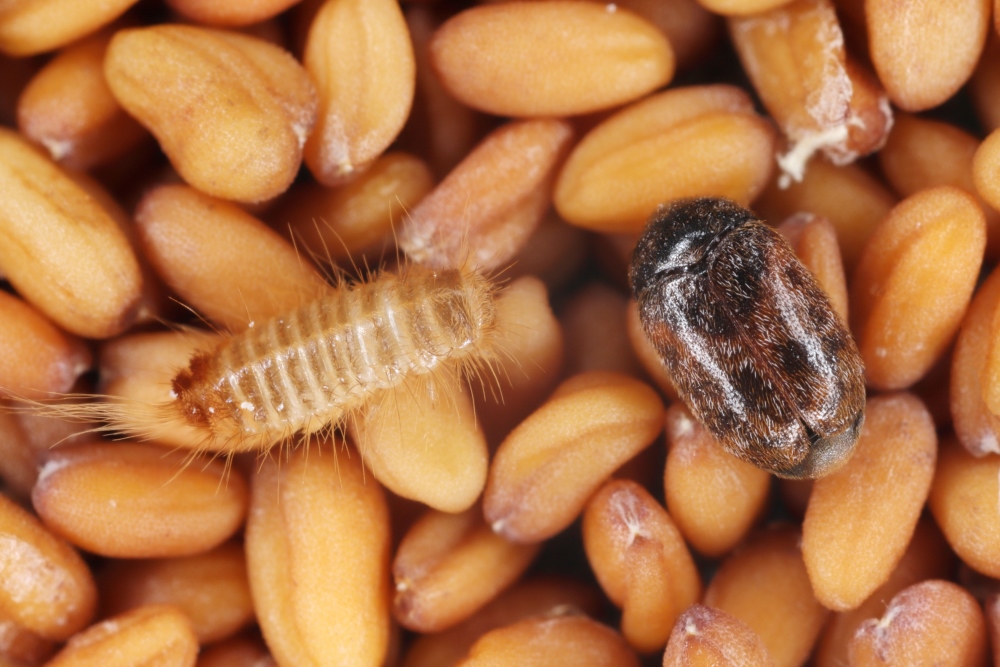
Biosecurity threats to the grains industry like Khapra beetle, cereal rust diseases and lupin anthracnose, are of top of mind for NSW Department of Primary Industries Grain Biosecurity Officer Kate Glastonbury.
While Kate is not a grain grower, she is at the forefront of protecting Australia�s $18 billion grains industry by helping growers manage biosecurity risks at a farm and industry level.
Kate is one of five Grains Biosecurity Officers in Australia employed through the Grains Farm Biosecurity program – an initiative to improve the management of biosecurity risks in the grains industry at all levels.
Launched in 2007, the program is managed by Plant Health Australia and funded by growers through Grain Producers Australia together with the New South Wales, Queensland, South Australian, Victorian and Western Australian governments. It covers cereal grains, pulses and oilseed crops.
�I talk regularly to industry and farmers about the importance of managing biosecurity, which starts at the farm level,� Kate said.
�That includes encouraging farmers to have biosecurity plans, recording and monitoring visitors to the farm and monitoring for pests and diseases.�
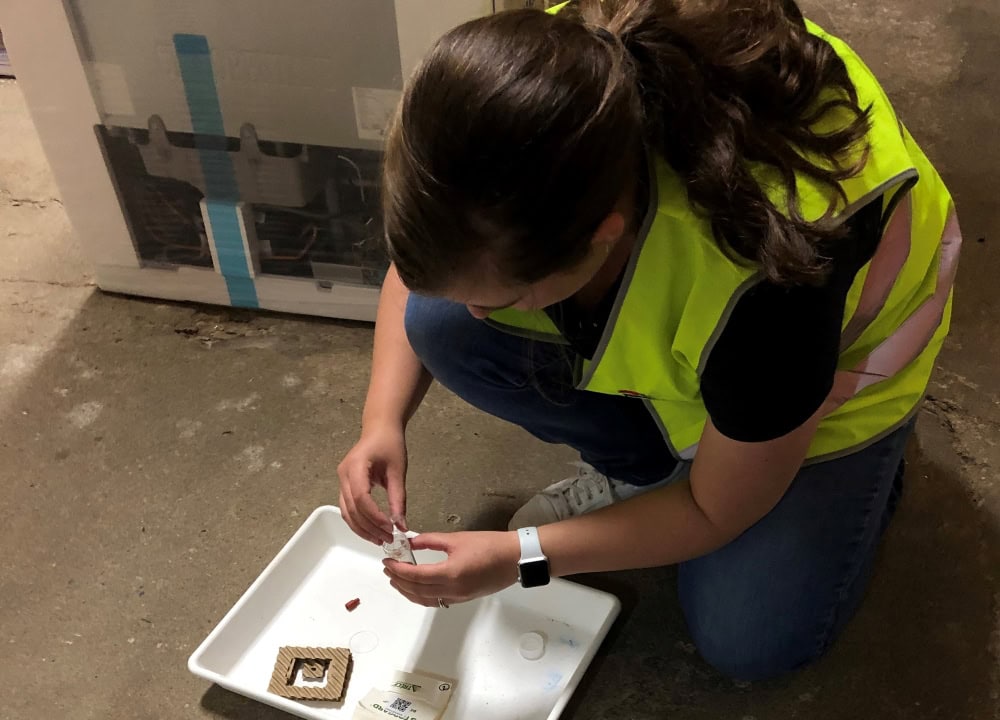
Kate also spreads the biosecurity message to agronomists and contractors through field day events and Grains Research & Development Corporation (GRDC) workshops.
�Good biosecurity is about being aware and taking action,� Kate said.
�Plant pests and diseases can be easily spread between paddocks and farming regions through the movement of machinery, vehicles, boots and clothes.�
Based in Orange, Kate became the NSW Grains Biosecurity Officer in March last year after working on NSW DPI�s Khapra beetle program.
Khapra beetle is a highly invasive insect that is not present in Australia. It poses a major threat to Australia�s cereal grain production, biosecurity, and environment. Recently, there have been a number of detections of Khapra beetle associated with containerised imported goods.
�We also do some surveillance work. I have just completed Khapra beetle surveillance in my region to help add to our absence data. Khapra beetle is one of the national priorities for the program that we work on as a group.�
�As we head into the winter growing season, there are also endemic rust diseases to look out for and exotic rusts such as Ug99. There are numerous pests and diseases we need to keep an eye on.�
NSW Grains Biosecurity Officer Kate Glastonbury
More than 1400 exotic plant diseases and invertebrate pests have been identified as exotic threats to the grains industry�s 25 leviable crops. PHA is working with industry to prioritise these threats and produce a list of the highest priority exotic pests of most concern for production and market access.
�There are state-based priorities for our program. In NSW, lupin anthracnose is one of those. This disease is present in South Australia and Western Australia, and we want to keep it out of NSW.�
Farmers can contact Kate on 0417687307 or [email protected] for information on exotic pests and diseases, assistance with biosecurity plans or farm biosecurity signs.Kate will also be at the AgQuip Field days from 22 – 24 August 2023.
More information on the Grains Farm Biosecurity Program can be found here via its website.
Visitors have a grain biosecurity role too
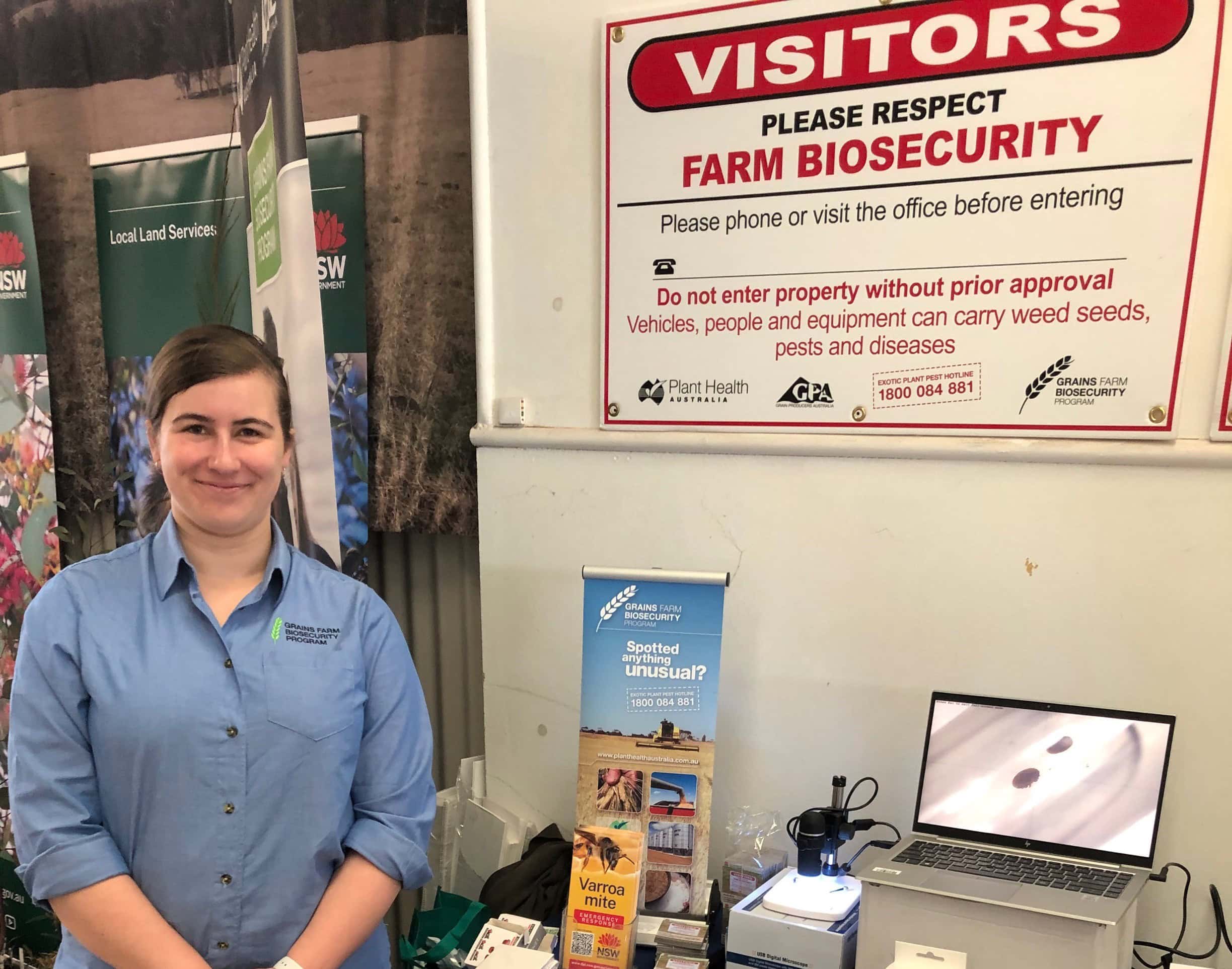
Kate said understanding that biosecurity is a shared responsibility is vital.
�As a visitor to any farm in Australia you have a responsibility to follow biosecurity procedures in place on the farm to reduce the risk of introducing or spreading unwanted pests or diseases,� Kate said.
Kate said the Grains Farm Biosecurity Program promotes simple guidelines for visitors to follow to help minimise biosecurity risks when working on farms.
Before arriving:
1. Contact the owner or farm manager. Inform them when you intend to enter the property and ask if there are any specific protocols or precautions in place, such as designated parking or wash-down areas.
2. Make sure your clothes, vehicle and equipment are clean. Soil and plant material can carry weed seeds and pests when left on tyres, radiator grilles, wheel arches, floor mats and work boots. Clean vehicles and equipment before you arrive on the property.
3. Carry a biosecurity kit in your vehicle. Each kit should contain items to clean clothing, vehicles and equipment and any personal safety gear.
On arrival:
1. Sign the visitor register. Anyone visiting a farm should sign a register if provided. This allows growers to record movements to and from the property and is an effective way to trace the spread of pests.
2. Use designated laneways and tracks. Equipment travelling through production areas can spread plant pests. Keep to laneways and minimise contact with any crops.
3. Close farm gates. Livestock can carry soil on their hooves and pick up weed seeds and plant material when walking through crops.
4. Report anything unusual. Notify the grower or manager if you see any unusual plant pests, weeds or obvious plant health concerns so appropriate action can be taken.
Before leaving:
1. Clean everything. It is just as important to leave the property as you entered it. Make use of vehicle wash-down stations, high-pressure hoses and appropriate detergents to clean all soil and plant material from your vehicle, equipment and clothing. This is especially important if you are moving to another property.
2. Sign out of the visitor register. For your own safety, the register will let the grower know if you are still on the property.


